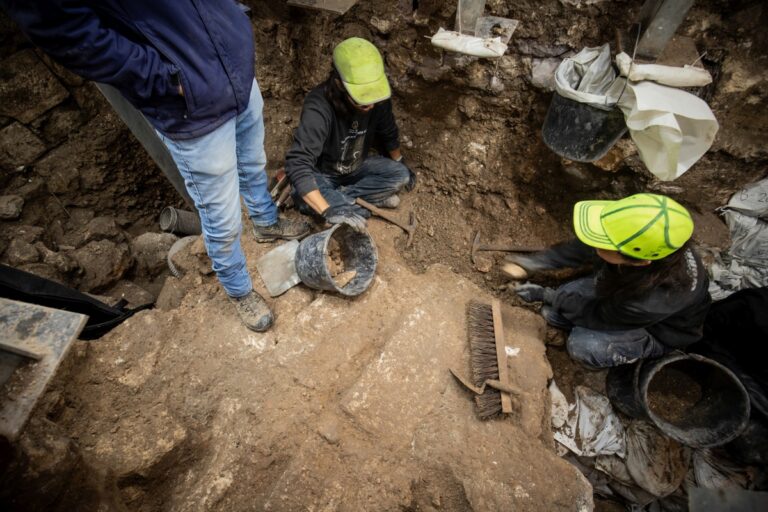Financial record carved into stone sheds light on the everyday life and commercial activities of Jerusalemites some 2,000 years ago.
It’s a good thing that digital receipts were unheard of back in the days of the Second Temple, enabling researchers to recently unearth a financial record carved into stone some 2,000 years ago in Jerusalem.
The stone was unearthed in the Jerusalem Walls National Park, at the site of the ancient lower city square that was connected to the Temple Mount and Second Temple by Pilgrimage Road, the city’s main thoroughfare at the time and a bustling commercial area.
The stone find bears seven partially preserved lines of fragmentary Hebrew names with letters and numbers beside them. One line, for example, contains the end of the name “Shimon,” and some of the numbers are preceded by their economic value, represented by the Hebrew letters mem and reish, short for the coinage terms ma’ot and reva’im.
“The everyday life of the inhabitants of Jerusalem who resided here 2,000 years ago is expressed in this simple object,” say Israel Antiquities Authority excavation director Nahshon Szanton and epigraphist Prof. Esther Eshel from Bar-Ilan University, who published this discovery in the Atiqot journal.
“At first glance, the list of names and numbers may not seem exciting, but to think that, just like today, receipts were also used in the past for commercial purposes, and that such a receipt has reached us, is a rare and gratifying find that allows a glimpse into everyday life in the holy city of Jerusalem.”

According to the researchers, the inscription was carved with a sharp tool on to a chalkstone slab. This slab, they note, was originally used as an ossuary, or burial chest, that was in common use in the Jerusalem area during the Early Roman Period (37 BCE to 70 CE).
Usually, ossuaries are found in graves outside the city, but they’ve also been discovered inside the city, perhaps as a commodity sold in a local artisan’s workshop or store.
This latest find joins other discoveries made along the ancient Pilgrimage Road, such as stone weights and a measuring table, again attesting to the area’s commercial nature.
“The combination of the architectural and tangible space of the huge paved stones of the square that were preserved at the site, and the discovery of small finds in this area, such as the measuring table and the new inscription, allow us to reconstruct parts of the incredibly unique archeological puzzle in one of the vibrant centers that existed in ancient Jerusalem,” the researchers conclude.
“Each piece of information, and certainly an ancient inscription, adds a new and fascinating dimension to the history of the city.”
Originally posted at israel21c.org


